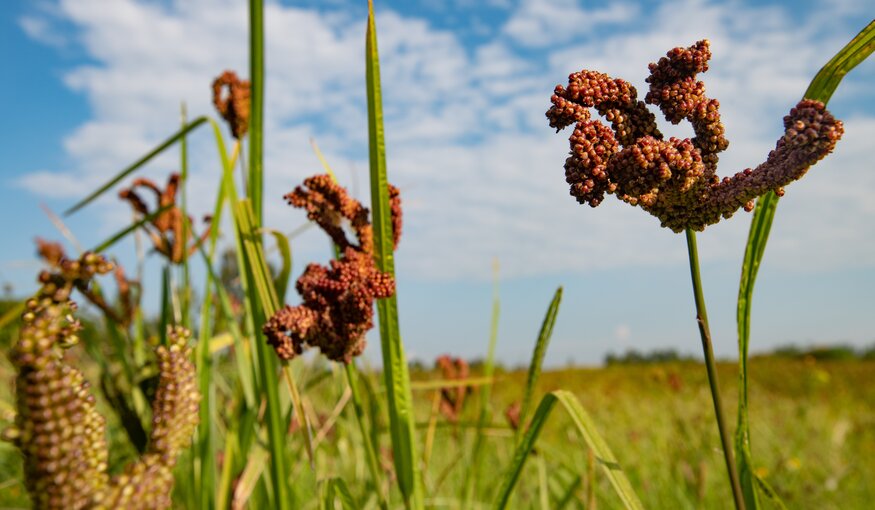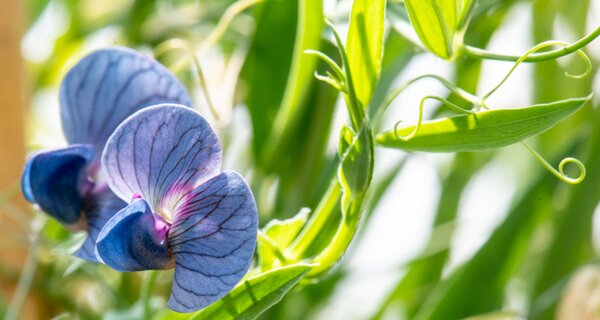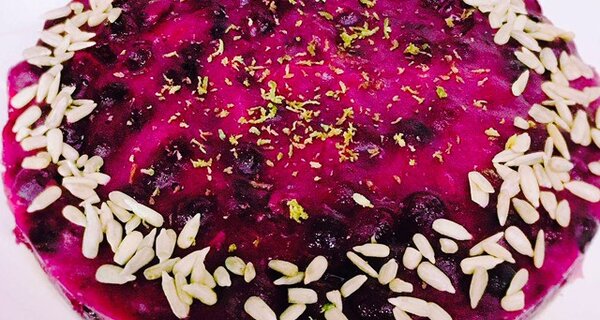Millets: Use Them or Lose Them

Finger millet in western Kenya. Photo: Michael Major/Crop Trust
30 March 2023
2023 marks the International Year of Millets – hardy, nutritious crops that are in decline. A recently published global conservation strategy maps out how to keep millets on our plates.
They’re hardy, reliable, rich in nutrients, valuable to local cultures, and vital for food security and global culinary diversity – but millets are crops in decline.
And – as highlighted now in the International Year of Millets in 2023 – experts warn that if urgent action is not taken to conserve their diversity, that could be lost forever, and the decline become irreversible.
“Millets are in trouble. They risk being lost from both fields and genebanks, and this is largely because they’re considered ‘minor’ crops, and note I’m making air quotes” says Paula Bramel, lead author of an action plan aimed at conserving the diversity of millets. “In fact, millets are essential for local nutritional security in many places around the world, especially for poorer people. We need to look after them better.”
Bramel led the assessment of the status of nine species of millets for a conservation strategy facilitated by the Crop Trust: pearl, finger, foxtail, proso, barnyard, little and kodo millets, plus teff and fonio.
The assessment found that farmers are abandoning millets in favor of more commercial crops, and that the genetic diversity of these crops is not being adequately conserved in genebanks.
“Millets don’t receive attention because research and breeding tend to be driven by commercial crops. The real threat of losing these crops shows that we need to get more focused on valuing diversity,” Bramel says.
The strategy is one of a series of studies facilitated by the Crop Trust to guide actions for the conservation and use of crop diversity.
“The diversity that we conserve now will form the basis for crop breeding and thus our food security in the future,” says Peter Giovannini of the Crop Trust, co-author of the millets strategy and the coordinator of the strategy project . “If we want options tomorrow, we must conserve crop diversity today. These strategies tell us how, crop by crop.”
When the growing gets tough
Not many crops grow reliably in the semi-arid parts of the world, which tend to be remote, rural and harsh.
Millets are the exception.
The various species grouped under this name, in particular pearl, finger, foxtail and proso millets, grow across South Asia and Africa, as well as in Eurasia, North America and Australia. Fonio is especially important in West Africa, and teff in Ethiopia.
These cereals are nutritionally rather special. They’re high in micronutrients and fiber, have a low glycemic index and are gluten free.
But on the downside, they’re difficult to process, and their productivity, while more reliable than most other crops from year to year, can be low overall, especially under climate change.
Bramel’s own appreciation for millets dates back to the start of her long career, when she earned her doctorate working on pearl millet in India in the 1980s.
“We should care more about millets because they fill gaps in food security in remote rural areas, where they’re an integral part of the culture,” she says. “But we should care in terms of our global food systems too, because they have nutritional values we can’t get from other cereals.”
A downward spiral
But millets have little in the way of a market—and even where there are urban markets, or a potential global market, rural farming communities do not have the infrastructure to supply them.
So, like other crops that don’t generate income through markets, millets get stuck with the label “minor” or “orphan,” which leads to a downward spiral of neglect.
“Because they’re considered minor, there’s not much research effort devoted to them, and because of that, they’re not being improved,” Bramel says. “They’re not getting the attention they need to increase their yield or drought tolerance, or disease and insect resistance.”
Because the crops aren’t being studied and improved, they become less attractive for farmers, who, wanting not only food security but also income, look to other crops. And the less farmers grow them, the more “minor” millets become.
“But with other crops, like rice or sorghum, farmers are actually taking more risks,” Bramel says. “Those other crops might offer greater opportunities for cash, but farmers are more likely to lose the harvest than if they grew millets.”
She recalls her experience in a semi-arid region of India, where farmers who had shifted to rice cultivation found they were unable to produce consistently enough for the competitive rice market.
“They came to us and said, ‘Do you still have that millet seed you collected from us for safekeeping? Because we now realize that we lost a lot when we stopped growing it.’”

Barcoding pearl millet germplasm at the ICRISAT genebank. Photo: Michael Major/Crop Trust
Lost and found and lost again
Crop diversity is conserved in three places: in natural areas, as wild relatives, in farmers’ fields, and in genebanks.
The assessment found that in the case of millets, all three are at risk.
“Farmers have been growing these crops for generations. Along the way, they improve the crop through selection, by keeping the best-performing seeds,” Bramel says. “If they and their neighbors grow less of the crops, in more marginal areas, their local varieties could be lost—before we even know they exist.”
It’s the same for wild relatives, often found in areas adjacent to the crop or as weeds: these undomesticated cousins of the crops have small grains not used for food, but they may hold important traits, and it’s not fully known what diversity is not being saved.
Then there are genebanks, which exist for this very reason: to ensure the diversity of crops is safely conserved and available for use by researchers, breeders, and the farmers themselves.
But here, too, millets are not getting the care they need.
“Again, they’re considered minor local crops, so there’s not a lot of diversity stored in genebanks, either because it was never collected, or because the collections weren’t stored properly and the seeds lost their viability,” Bramel says.
Furthermore, genebanks often aren’t aware of what is available elsewhere, and have few avenues and opportunities for sharing. As a result, opportunities to use the seeds, and to distribute better-performing varieties to farmers, are also being lost.
Which adds up to an urgent need to support millet genebank collections, Bramel says.
And, she says, we should stop calling millets “minor.”
“It’s not all about the major cereals, important as they are,” she adds. “It’s about valuing diversified diets and local crops and figuring out how we can build upon them, rather than replacing them. Because, ultimately, we need all the diversity we can get, both between and within crops."
Categories: Global Crop Conservation Strategies, Finger Millet, Pearl Millet, Small millets
About the Global Crop Conservation Strategy project
The development of this Global Crop Conservation Strategy was funded by the German Federal Ministry of Food and Agriculture (BMEL) as part of a three-year project led by the Crop Trust: “Breathing New Life into the Global Crop Conservation Strategies: Providing an Evidence Base for the Global System of Ex situ Conservation of Crop Diversity.”



